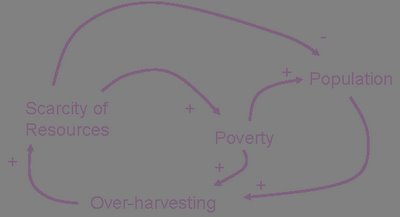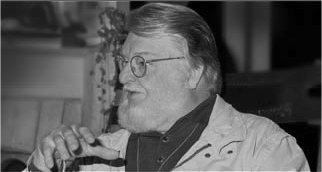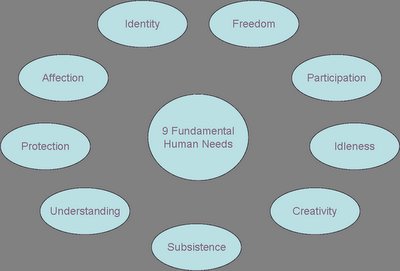First things first, a warm welcome to Bruschi back in the Pats practice rotation! An impressive feat and welcome piece of news... So, I've been getting a lot of heat for not posting in a while, my apologies, but as expected things continue to get busier. We have group presentations (on various tools or concepts related to Sustainable Development - my group's doing EMS (Environmental Management Systems)) and exams next week, so time to buckle down a bit. But here is my last essay from our module on Social Sustainability. Read it with a caveat: the assignment was structured as a way for us to just think things through and play with some ideas, it certainly isn't meant to be an academic paper in the traditional sense - we were limited to 5 pages on a monstrous topic, so generalizations are broad, thoughts incomplete, many of the statements made have volumes of evidence and reasoning behind them that aren't stated, and some knowledge is assumed to be known by the readers (our profs). We were asked to write on the 4th principle and what more could be said on it. I took the liberty of focusing on the current global economic system and its integral role in Social Sustainability.... enjoy:
Number IV In Your Programs, But Number 1 In Your Hearts…. Social Sustainability!
At present, global society is unsustainable. This fact is evidenced through the effects of this unsustainability, including systemic starvation (1 billion people), global warfare (“on terror”, Israel, Palestine, Iraq, Afghanistan, Korea, Kashmir, Sudan), loss of cultural diversity (Westernization / Americanization), and political and economic tyranny (WTO, IMF, Unilateralism) on the global level. We are witnessing the paradox of globalization – while the world is becoming ‘smaller’ with increased international interaction, communication, and trade, there is an undeniable loss of cultural diversity and a breaking down of the social fabric on the global scale.
A key component to this social disarray is a lack of understanding about what constitutes success in terms of social sustainability. The fourth sustainability principle outlines the conditions for success, and Max-Neef’s nine categories of need provide a useful compliment by defining human needs. However, the current dominant model for success is drastically different. It focuses primarily on the growth of material wealth and the assumption (or faith) that that will result in the fairest and most efficient allocation of resources, hence maximizing social welfare. Implicit is the assumption that meeting the need of subsistence, followed by further growth in material consumption will necessarily eventually lead to the satisfaction of other needs. Convincing enough of the key actors in the global socio-political-economic system that there are other criteria for success is a huge challenge, as it requires a drastic shift in thinking and a breaking away from strong, entrenched models.
During my first semester of college I took Econ 1: The Price System. Early on, Professor Anderson explained about assumptions that must be made so we could analyze economic systems scientifically. The basic assumptions include:
1. People have rational preferences among outcomes that can be identified and associated with a value.
2. Individuals maximize utility and firms maximize profits.
3. People act independently on the basis of full and relevant information.
I was shocked. It didn’t make sense that an entire discipline could be founded on assumptions that were so obviously, intuitively flawed. There was an implication that if you could not make that leap in your mind to accept these assumptions, you weren’t cut out for this high-powered discipline, and because of the speed of the course, most easily internalized them and moved on without looking back.
The neoclassic economic model has brought societies very far, very fast. The feats of humankind in the past 150 years are obvious and many, which works to reinforce faith that the model is successful. However, it has become increasingly clear since the 1970s that the model is outdated. Aside from the limits to growth imposed by the biosphere, the model is failing in its aim to improve social welfare. In order to address the challenge of changing such a massive, complex system, it is necessary to have some strategic guidelines.
Donella Meadows’ identification of ‘leverage points’ in a system provides a helpful starting point. What she deemed the most effective point of intervention – the power to transcend paradigms – relates directly to Max-Neef’s lecture discussion on quantum physics and the existence of alternate realities. While we all have the capacity to at least intuitively understand this on some level, there is great difficulty in abandoning our constructed realities, and letting go into what Meadows’ refers to as ‘Not Knowing’. Furthermore, there is little one can do outside of themselves to create such a transcendence in others. So while it may be the most effective, it is probably not the most realistic, at least at this time.
Her second leverage point is to change the paradigm, or mindset of the system. As discussed, the neoclassic economic model is deeply entrenched, and due to its past success has the ardent faith of most of the key actors in power. With regards to how one could possibly change such an ingrained model, Meadows summarizes Thomas Kuhn:
In a nutshell, you keep pointing at the anomalies and failures in the old paradigm, you keep speaking louder and with assurance from the new one, you insert people with the new paradigm in places of public visibility and power. You don’t waste time with reactionaries; rather you work with active change agents and with the vast middle ground of people who are open-minded.
In the case of our global economic system and its impact on social sustainability, one does not have to look far to find the ‘anomalies and failures.’ Exploitation of labor, unfair Free Trade, and the un-reigned power of multi-national corporations are a few far-reaching failures of the system with devastating effects global society. All over the globe, peoples’ capacity to meet their needs is being systematically undermined.
A more concerted, organized and credible effort – beyond the reactionary, theatrical protesting of WTO meetings – needs to be made, working with those change agents and the vast middle ground of the open-minded to illustrate that the current model is outdated, no longer viable, and a major threat to global social sustainability. Simultaneously, successful aspects of the emerging new model (some combination of the products of the ‘New / Second / Third Industrial Revolution’, such as ‘Ecological Economics’, ‘Sustainable Business’, ‘Natural Capitalism’, etc) must continue to be highlighted and emulated.
Closely related to changing the model, is the 3rd point on addressing the goals of the system. Neoclassical economics are concerned with the allocation of scarce resources and the maximization of utility and profit. To those ends, the goals of the system have become growth and efficiency, or in more concrete terms higher GDP. Some perspective is needed on the absurdity of such goals for their own sake, which is again difficult because these are rather basic values of the ingrained system. Still, the advent of more relevant indicators of progress (ISEW, GPI, GNH) has provided us with the basis for more effective evaluation of the system’s success and highlights the flaws of the model.
Such modifications in the system’s framework relate to the 4th point, concerning a system’s ability to self-organize. What’s needed is a more specific re-articulation of the existing goal of the system – of what we mean by maximizing utility – along with some other key terms. The system must shift from seeking physical growth for its own sake to development, or ‘growth of value’ and from valuing efficiency for its sake to effectiveness or ‘efficiency with purpose’. The chances for success at this leverage point are greater, as it does not require transcending paradigms, abandoning the existing model, or even changing its goals. The familiar components are still there, just approached in more honest and effective ways. Markets (that are fair), growth (of value), efficiency (with purpose), and self-interest (that is enlightened) will remain integral parts of an evolved, sustainable, capitalist economic system. Ideally, the adaptation and evolution of the current system result in a smooth and peaceful transition to the new sustainable economic model.
We are starting to see some very exciting, concrete (though preliminary) changes take place as the system slowly begins to become aware of the “new” realities it faces in terms of the ecological sustainability. A shift from goods-based to services-based business models along with mechanisms for internalizing externalities (i.e. Kyoto) are starting to prompt businesses rethink the existing structure of the model.
This shift will likely be more difficult in terms of social sustainability. Cross-cultural understanding is a challenge, as is quantifying happiness and identifying needs. Since the invention of the “under-developed” nation by Truman in 1949, the imposition of various elements of the dominant American culture – both explicit and implicit (mass media, consumerism, Western democracy, industrial agriculture, etc) – on others has been seen as a noble cause. Regardless of intentions, this approach has proven to be destructive and open to manipulation by multi-nationals aiming to open up new markets and exploit inexpensive labor. The political story of good intentions and the corporate vested interest, make the structural changes needed for social sustainability harder to achieve. It is easier to conceptualize how systematic increases of pollutants and physical degradation of natural systems is unsustainable, than it is to see that selling goods and providing jobs to ‘developing’ economies in an unregulated global economy with an imbalance of power is systematically undermining peoples’ capacity to meet their needs.
One way or another, the system will change. Hopefully, through continued pressure on lower-level leverage points (the rules, information flows, positive and negative feedback loops, time delays, etc.), the structure, goals, and the shared model of the system will change at an appropriate pace. Only then will we be able to realize a socially sustainable future.


